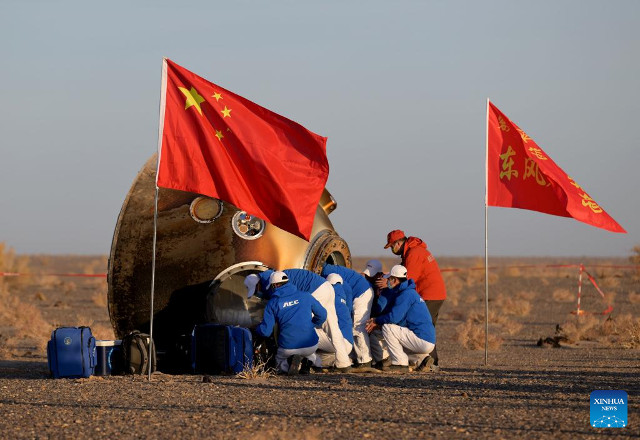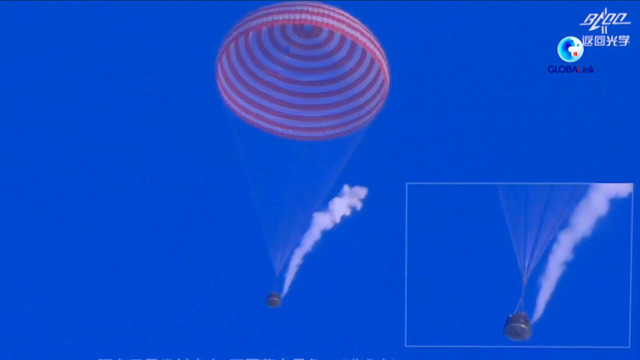
Yesterday, the three Chinese taikonauts of the Shenzhou 16 mission returned to Earth after spending 154 days on the Chinese Tiangong space station, landing at a site called Dongfeng in China’s Inner Mongolia Autonomous Region. During the capsule’s descent, some observers noticed a hole in the parachute. The speed of descent may have been faster than normal and the capsule toppled over after landing. It has already happened in the past that the capsule didn’t remain vertical and no consequences were reported for the taikonauts on board Gui Haichao, Jing Haipeng, and Zhu Yangzhu. In fact, there are no official communications regarding anomalies during the landing.
On Monday, the Shenzhou 16 mission’s taikonauts departed China’s Tiangong space station after finishing a mission that began on May 30. After almost 12 hours, the landing capsule carried out its descent in an apparently normal manner. However, when the parachute deployed, it was possible to see that it had a hole near its center. Immediately after landing, the capsule toppled over, an event that is actually not new.
Over the next hour, the three taikonauts were extracted from the capsule by personnel who had come specifically to assist them. The images showed no consequences for the landing which was probably more violent than expected and there are no official press releases mentioning anomalies.
If indeed there were no consequences for the taikonauts, that’s a positive fact that indicates high levels of safety of the capsule. However, doubts remain about the use of a single parachute, a design choice shared with the Russian Soyuz capsules while NASA prefers a redundant system with multiple parachutes.
Official communications are focused on the fruitful results of the Shenzhou 16 mission with many experiments of various types conducted on the Tiangong space station and samples brought back to Earth. Last week, Lin Xiqiang, deputy director of the China Manned Space Agency, stated that some projects achieved results that may have applications showing the benefits of Tiangong as a national space laboratory.
The Chinese authorities may decide to not even mention the parachute problems but there will certainly be an investigation by the Chinese Manned Space Agency to understand its causes and prevent the problem from happening again. The nation’s ambitious space program is progressing step by step, and it’s crucial that problems are resolved before they cause disruption.


